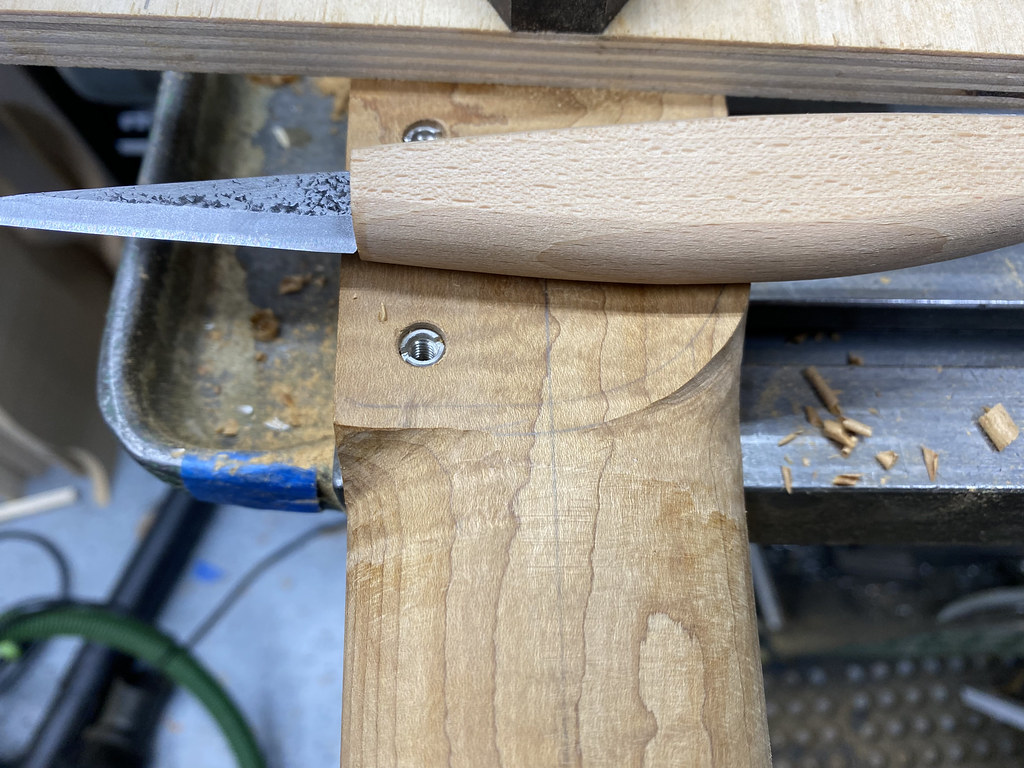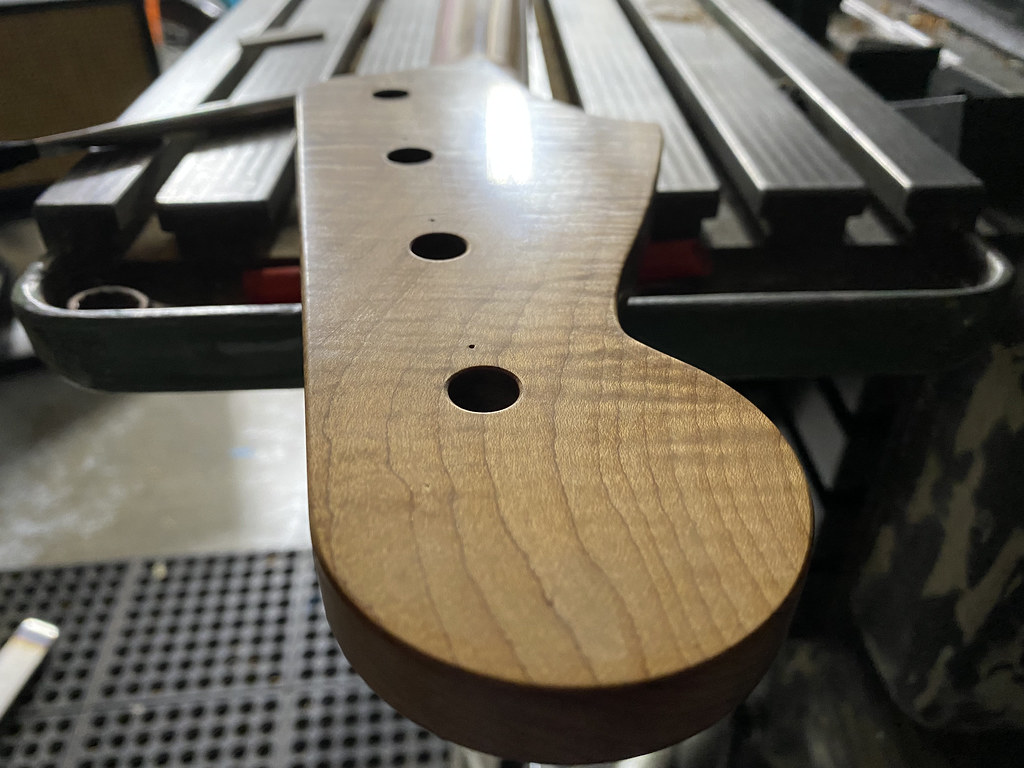Planets aligned yesterday and my wife made it possible for me to take the day off from stunt-teaching/family crisis damage control responsibilities to do something for myself. So I started making a bass...well, not started technically. I started sometime last year by jointing, planing and joining a big ash slab into a rectangles big enough to cut some guitar and bass bodies. I currently have three ukuleles, a bass and six guitars in some early stage of completion and decided to focus my energy on the one that we don't have in the house.
The woodwork on the body is so straightforward that I didn't take any photos. So far the basic profile was cut, pockets for the neck and electronics and the corner roundovers done. I'm going to do the belly cut, arm rest and a little extra material removal by hand as time allows.
cutting slots for the carbon reinforcement rods and truss rod is fairly accurate work and rather than build a sled for it, I choose to do it all on my mill, only the mighty Deckel doesn't have enough X axis travel to cut the entire 24" slots. I drew a cross section to see where I could place the carbon rods and not have too high a risk of cutting into them when I profile the neck, laid out my lines and then had at it.
IMG_1539 by Sean Chaney, on Flickr
IMG_1540 by Sean Chaney, on Flickr
This is where a "limitation" of the Deckel, isn't really all that bad. Unlike most mills, the integrated table on this machine is actually vertical and there are a number of accessory tables that can be bolted to it. This is one of the two that I have and it's just a rigid 90° table that keys into the slots at the height you choose. All I had to do was loosen the bolts and slide it over, reclamp one of the hold-downs and cut the rest of the slots.
IMG_1542 by Sean Chaney, on Flickr
IMG_1543 by Sean Chaney, on Flickr
64192724089__6AD51C52-C17C-430F-AF70-5AFE445A62BC by Sean Chaney, on Flickr
Then to mix up the epoxy, set the reinforcement rods in place and wait six hours for it to cure.
IMG_1545 by Sean Chaney, on Flickr
IMG_1546 by Sean Chaney, on Flickr
The slots are cut to create a snug press fit of the rods, which doesn't leave any room save for a few thou at the ends for the epoxy to escape so it's a bit of a project to get them in place, but they sit a few thou shy of the top surface of the neck which gets flat sanded one more time before the fingerboard is epoxied to it all.
It's a flat sawn neck with some crazy figure, but it's been sitting for at least a year in my house and has remained stable. The fingerboard was resawn from the same slab and once it has some lacquer on, should look spectacular...we'll see how that goes.


 Likes:
Likes: 



 Reply With Quote
Reply With Quote











Bookmarks